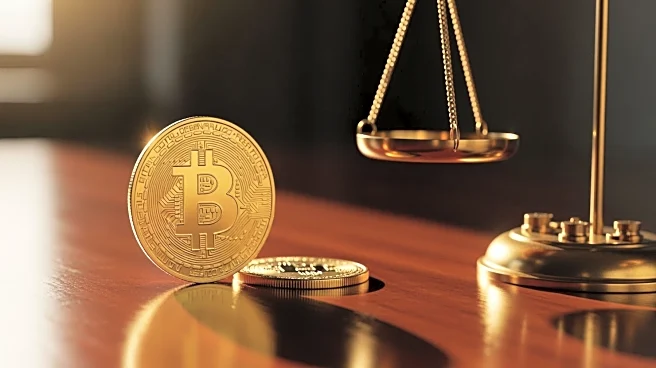What's Happening?
Gold prices have reached historic highs, prompting wealthy investors and family offices to lease their gold bars to refiners, jewelers, and fabricators for interest. This trend challenges gold's traditional
role as a non-yielding asset. SafeGold, a company facilitating these leases, has seen a significant increase in leasing volumes, from $2 million to $40 million since the start of the year. Investors earn yields paid in gold, while borrowers use the leased gold for production without exposure to price swings. The appeal lies in earning income from gold holdings and avoiding currency depreciation risks.
Why It's Important?
The leasing of gold bars represents a shift in how investors view gold as an asset. Traditionally seen as a safe haven, gold is now being utilized to generate income, reflecting a broader trend of maximizing asset utility. This development could impact the gold market by increasing liquidity and altering traditional investment strategies. Investors gain by earning yields, while jewelers and fabricators benefit from stable gold supplies without price risk. The trend also highlights concerns about currency depreciation and global debt, driving more investors to accumulate gold.
What's Next?
As gold leasing becomes more popular, the industry may see increased participation from individual investors and smaller businesses. This could lead to more sophisticated leasing platforms and risk management strategies. Stakeholders, including jewelers and refiners, may continue to rely on gold leasing to manage production costs effectively. The trend may also prompt regulatory scrutiny to ensure transparency and mitigate risks associated with counterparty defaults.
Beyond the Headlines
Gold leasing introduces ethical and operational risks, such as counterparty risk and potential fraud. Companies like SafeGold and Monetary Metals employ measures like insurance, audits, and RFID technology to mitigate these risks. However, the possibility of default or receiving impure gold remains a concern. The practice also raises questions about the long-term implications for gold's role as a financial asset and its impact on traditional banking and investment models.











